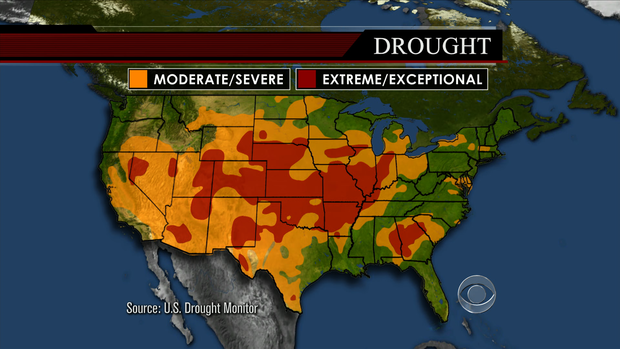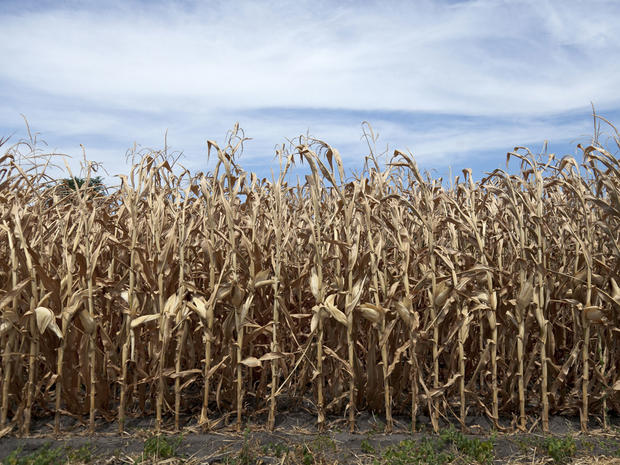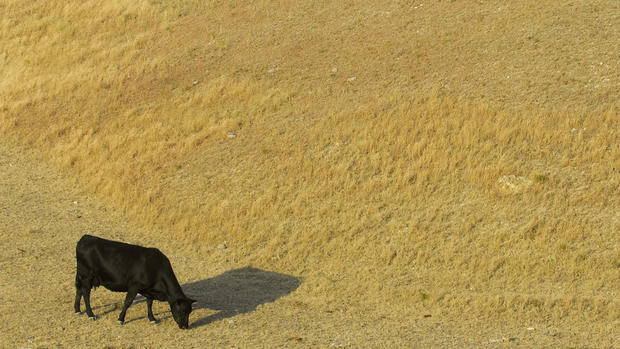Food prices expected to rise as drought continues
(CBS News) Hardly a day passes that there aren't new pictures and signs of the Great Drought of 2012. The government put out a report Friday that brings home just how severe it is. It is not just farmers and stockmen who are affected: It's going to mean higher food prices for everyone.
Drought hits hay crop and other farmers share the pain
Drought taking toll on corn crops, and prices
As corn withers, farmers turn to drought-friendly sorghum
Nearly one quarter of the country is now in what the government classifies as "extreme or exceptional" drought.
For the second month in a row, the Agriculture Department said that means corn and soybean production will be down this year, 13 percent and 12 percent respectively. Beef production will be down 4 percent as well.
What that means of course is that as food production goes down, food prices go up.
The worst drought in half a century sent corn prices to a record high on the floor of the Chicago Board of Trade Friday.
"This is not inflation. We just don't have any," said trader Scott Shallady of the Trean Group.
Shallady said this wasn't good news for prices.
""In the short term you'll see prices at your dinner table rise 3 to 5 percent," he explained. "And if we really don't get an answer to this question it could be a 10 percent rise in the next six to eight months."
The impact will be felt more in some shopping aisles than others.
"The products in the supermarket that are really going to show this are meat and dairy products and eggs," Jimm Dunn, an agricultural economist at Penn State, said.
Dunn stated that animal-based products are taking the biggest hit in part because corn is an essential part of the diet for cows.
"Of course, consumers can make some adjustments in what they eat," he pointed out. "The cows don't have that opportunity."
The drought worries co-CEO Walter Robb at the Austin, Texas supermarket chain Whole Foods.
"Not good for farmers. Not good for consumers in any way shape or form. But manageable I think," he said.
The USDA said the prices of farm products like corn and soybeans make up about 14 percent of the average retail food purchase. So, even if all farm products doubled, retail food prices would only increase by about 14 percent.
But the drought is increasing demand all around the world. The global price of corn jumped 23 percent last month.
"So, you can see volatile prices and higher than normal prices until we really get a good crop from our own farmers here next year," Shellady stated.
That's if we get a good crop. The overall impact on the U.S. economy is expected to be muted though because American households typically spend about one-sixth of their budgets on food, and shoppers often switch to cheaper items.



